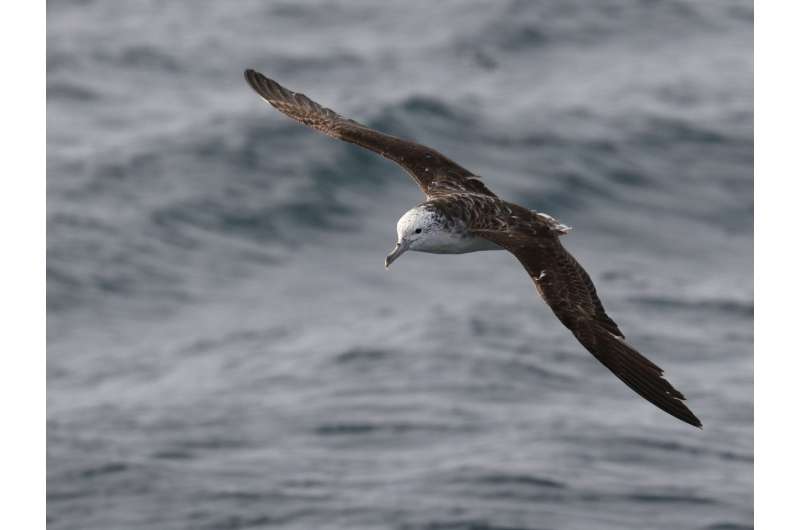September 28, 2017 report
New approach to study of bird navigation leads to development of animal decision-making model

(Phys.org)—A trio of researchers with the University of Tokyo and Nagoya University, both in Japan, has developed what they describe as a new model for use in the study of animal decision making. In their paper uploaded to the open-access site Science Advances, the group describes their study of navigation by birds flying over the ocean and the development of their model.
As the authors note, previous efforts to understand how birds are able to navigate over long distances and over oceans have relied on capturing specimens and attaching devices that take bio-measurements of the birds in flight. This approach, they also note, is quite demanding, because it requires studying data after the bird is recaptured; additionally, the data is of use in only a few applications. In this new effort, they took another approach.
Instead of attaching bio-sensors to test birds, the team instead attached GPS devices to 33 Calonectris leucomelas – migrating seabirds, which allowed for monitoring the birds' progress in near real time as they made their way across the ocean. The plan was to note how the birds reacted to winds that forced them from a direct route to their destination.
The researchers report that the birds would reorient themselves in ways that did not always point them directly at their destination, which was a necessary means of adjusting their position relative to how much wind they encountered from one side or the other. This, they suggest, indicates that the birds have some means of creating a global map that they follow to reach their destination. It also suggests, the team notes, a general model for use in studying animal orientation under flow conditions—one that is relatively simple to use because it uses only GPS. It could be used for studying the behavior of other birds, they point out, or even fish.
In gathering GPS data from multiple moving entities, the researchers also found that they could use the data in other ways—to monitor wind speed for a region, for example. Using the technique could lead to better weather forecasting, they note, or it could be useful in conservation efforts to measure changes in currents or wind conditions.
More information: Yusuke Goto et al. Asymmetry hidden in birds' tracks reveals wind, heading, and orientation ability over the ocean, Science Advances (2017). DOI: 10.1126/sciadv.1700097
Abstract
Numerous flying and swimming animals constantly need to control their heading (that is, their direction of orientation) in a flow to reach their distant destination. However, animal orientation in a flow has yet to be satisfactorily explained because it is difficult to directly measure animal heading and flow. We constructed a new animal movement model based on the asymmetric distribution of the GPS (Global Positioning System) track vector along its mean vector, which might be caused by wind flow. This statistical model enabled us to simultaneously estimate animal heading (navigational decision-making) and ocean wind information over the range traversed by free-ranging birds. We applied this method to the tracking data of homing seabirds. The wind flow estimated by the model was consistent with the spatiotemporally coarse wind information provided by an atmospheric simulation model. The estimated heading information revealed that homing seabirds could head in a direction different from that leading to the colony to offset wind effects and to enable them to eventually move in the direction they intended to take, even though they are over the open sea where visual cues are unavailable. Our results highlight the utility of combining large data sets of animal movements with the "inverse problem approach," enabling unobservable causal factors to be estimated from the observed output data. This approach potentially initiates a new era of analyzing animal decision-making in the field.
Journal information: Science Advances
© 2017 Phys.org


















